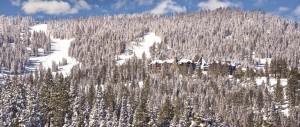Denver, CO – Winter season booking pace, occupancy, and revenues at western mountain communities across Colorado, Utah, California, Nevada, Oregon and Wyoming reversed directions during October and regained some ground, according to the most recent results released yesterday by Denver-based DestiMetrics.
As of Oct. 31, on-the-books occupancy for the six months from November through April is up 1.2 percent compared to the same time last year and is an uptick from the 1.1 percent decline reported last month. On-the-books revenues are up 2.8 percent compared to the same time period.
Kicking off the season, November is currently posting a 6.6 percent increase in on-the-books occupancy with revenues up 9.5 percent compared to the same time last year. The booking pace for October that includes arrivals for October through March is up a slight 0.7 percent—an improvement over the 2.3 percent decline reported last month.

“Early season booking activity is up slightly but significantly lower than the double-digit increases that resorts have been posting in the past several years in both summer and winter,” observes Ralf Garrison, director of DestiMetrics.
Garrison was also quick to point out that this most recently analyzed data through October doesn’t yet reflect the impact that recent snowfall received in many resorts will have on bookings for the remainder of the season.
“Extensive media coverage about the ‘Godzilla’ El Niño weather pattern and active storm systems are looking favorable right now and could be the perfect antidote to dispel some lingering perceptions about negative ‘snow equity,’ particularly at Far West resorts,” he added.
According to Tom Foley, operations director for DestiMetrics, although the economy is slowing from last year’s steady growth phase, it remains a positive force for bookings. “The economy is showing continued strength in financial, employment and consumer markets. Just as critically, many of the domestic hurdles including the budget and debt ceiling agreements that were an issue 30 days ago have now been resolved,” Foley says.
“The twin potential disruptors for the coming winter are economic volatility and the possibility of shifting weather patterns — both of which upset consumer confidence when booking winter vacations,” explains Garrison. “The next two months will provide the data from which the outcome of the season can be projected and allow a clearer picture to come into focus.
Also, the final numbers are in for summer 2015 across western mountain resorts. The fourth consecutive summer record was led by a 7.3 percent increase in occupancy and an 11.4 percent percent increase in revenues for the six months from May through October. The aggregated data also revealed that September and October both posted dramatic increases that indicate more growth potential for what has traditionally been considered the low or shoulder season for mountain resorts.

